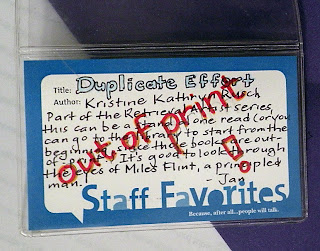
That title is a quote from a favorite picture book of mine, Shaun Tan's The Red Tree. It's being reprinted soon (coming in April, as part of a bindup of three Tan-illustrated picture books), and I'm glad to hear it. The Red Tree is really a picture book for grownups, as many are, and it combines Tan's rich paintings with simple, poetic text about how bad a bad day can feel.
It seems like this past winter, a lot of people around me are having a really hard time for various reasons, and I thought about posting terrible, horrible, no good very bad day picture books in solidarity, then realized I've done that post before. So I've decided to do a post about bright, exuberant, celebratory picture books, the kind with irrepressible protagonists that somehow work even though there's not a ton of conflict, or the ones that just warm you up, even if you try hard to stay Eeyore-y. Let's go:

#1: Keisha Ann, from Keisha Ann Can! Lots of picture books, especially ones about school, are about the dark side. Separation anxiety, bad grades, bullying, scary new experiences, etc. And those are great. But other than Keisha Anna Can! I can't think of one that is just a whole book about a totally capable kid celebrating how proud she is of herself. And sometimes I need to read it to myself, to pick up some Can! when I'm all can't.

Who knows all the weekdays?
Who can read the alphabet?
Who can sharpen pencils?
Who can feed the classroom pet?
Who can count how many days
it's been since school began?
Who can pass out paints and brushes?
KEISHA ANN CAN!
Oh my gosh, Keisha Ann, meeeee tooooo!!! Now let's go kick some butt at tetherball just you and me! WOOHOO!!!

#2 Brand new Forsythia & Me, by Vincent X. Kirsch (what does the X stand for? I must know!). Forsythia is the narrator's best friend, and is rambunctious and creative and brilliant. It opens like this: "Forsythia and I are best friends. She does things that amaze me." Aw, man! I want my friends to describe me that way. What a lot in one simple sentence. And who hasn't had someone like that in their life? The next thing we hear is: "Forsythia can decorate the most incredible birthday cakes I have ever seen. This year she flew out of the cake she had made just for me." So we know it's going to be one of those wackadoodle stories that's just over-the-top enough to be worth a picture book. She performs in the circus, they have tea with zoo animals, and throughout the whole book she's wearing heart-shaped sunglasses and sticky-outy braids ('cause that's how she rolls). When she's feeling sick, it's Chester's turn to pull out all the stops to entertain his friend, and when the book heads toward the finish line with Forsythia saying, "Chester, you amaze me!" my little heart gets all squooshy.

#3 is Millie's Marvellous Hat and I cannot believe none of us has blogged about it before. The Kids Department loooooves this book, and so does everyone we sell it to (right, guys? Back me up). Great for two- or three-year-olds on up to early elementary, this'd be a perfect preschool read aloud (and it often is around here). Sometimes I find books about imaginative play kind of weird, like they're almost redundant or something. Kids know how to play make believe, and books are already fiction, so books about make believe often fall flat for me. But not Millie— for one thing, just look at her cheerful little face. Satoshi Kitamura's illustrations are always pretty and interesting, but sometimes too busy or with too many jagged angles for me. This time, the palette is great, the faces and bodies expressive, and the story is a winner. Millie can't afford the beautiful hat in the window of the hat store, so the man sells her a hat (for free) that "is a most marvellous hat, Madam...It can be any size, shape or color you wish. All you have to do is imagine it." So she goes outside, starts imagining her hat into all sorts of great things, and then moves on to imagining everyone else's hat all through the park, until she gets home and gets her parents to imagine their own hats (a penguin hat and a flowery one, if you're curious). I want the cake hat!
#4 would be Stand Tall, Molly Lou Melon, by Patty Lovell and David Catrow, but we don't have a copy right now and I don't want to just write about it from memory. She's a great character, though, and just a reminder that if you embrace being weird, it can be empowering. I always need to learn/remember that.
-Anna, Kids Books




















